Hey everyone! As some of you may know, I live in the mountainous terrains of Colorado, USA. My house is located right on the top of a large, foresty hill. Starting in September and ending in November of last year, my dad and I began to construct a large 300 foot long zipline over what used to be an old covered wagon road. Here are the pictures and their descriptions, enjoy!
Here is the diagram that shows the overall layout of the zipline. It isn't to scale but you may want to look it as I refer to different parts of the zipline on upcoming pictures.
As we looked for different locations to put the zipline, we tried to find a location with a relatively clear of trees area and large trees to connect to as sturdy foundations for the zipline. The 150 year old road below the house looked good, but it had no good trees to connect to. There was a tree at the bottom but none at the top. So we came up with a rather innovative solution. We used a cable to create a bridge between two large trees that were adjacent to the road and attached the main cable to the center of the 'bridge' creating a Y as you can see below. The blue circles are the main load bearing trees. You can see the one at the bottom and the two at the top. (the road is in brown) The red circles are the secondary support trees. One of the main upper trees and the main lower tree had the cable attached to them from a high distance off the ground which gave the cable great leverage and a great potential to pull the tree out of the ground, so we attached those trees to the bases of some other smaller trees to act as supports.
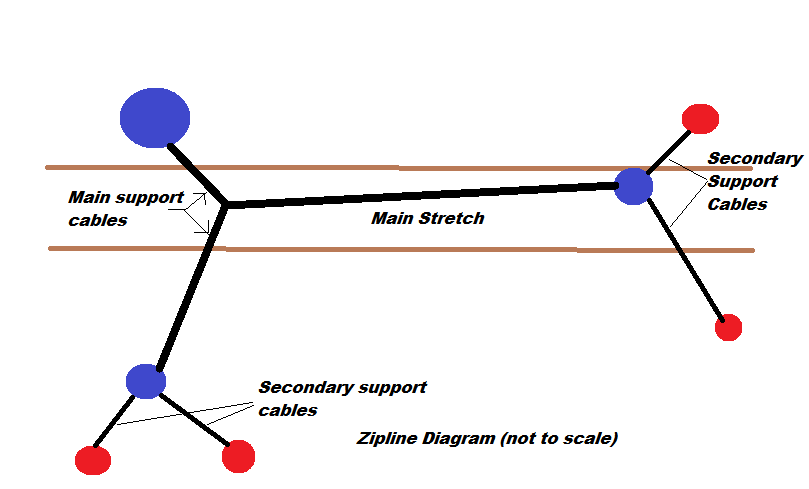
Here is a picture looking down the main cable as seen from the mounting ladder:
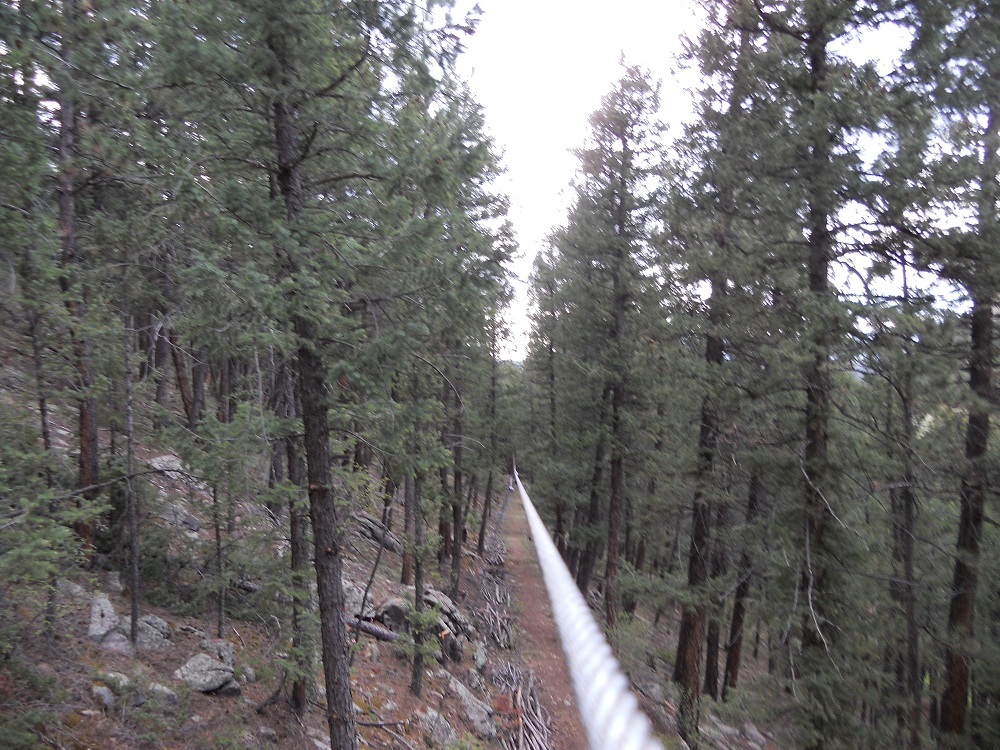
Here is the ladder that is used to get on the zipline. You attach yourself up at the top, go to the bottom, and get towed back up to the top by a willing volunteer to get back off:

We are currently working on a method of getting off at the bottom instead of the top to eliminate the need for towing.
Here is one of the connections between the cable and the tree at the top of the zipline. The cable that veers off to the left is the main cable. You can see the turn buckle and the cable clamps used to attach the cable to itself as it loops around the tree. We have plastic shrouding around the places where the cable contacts the tree to prevent the cable from digging into and damaging the tree.
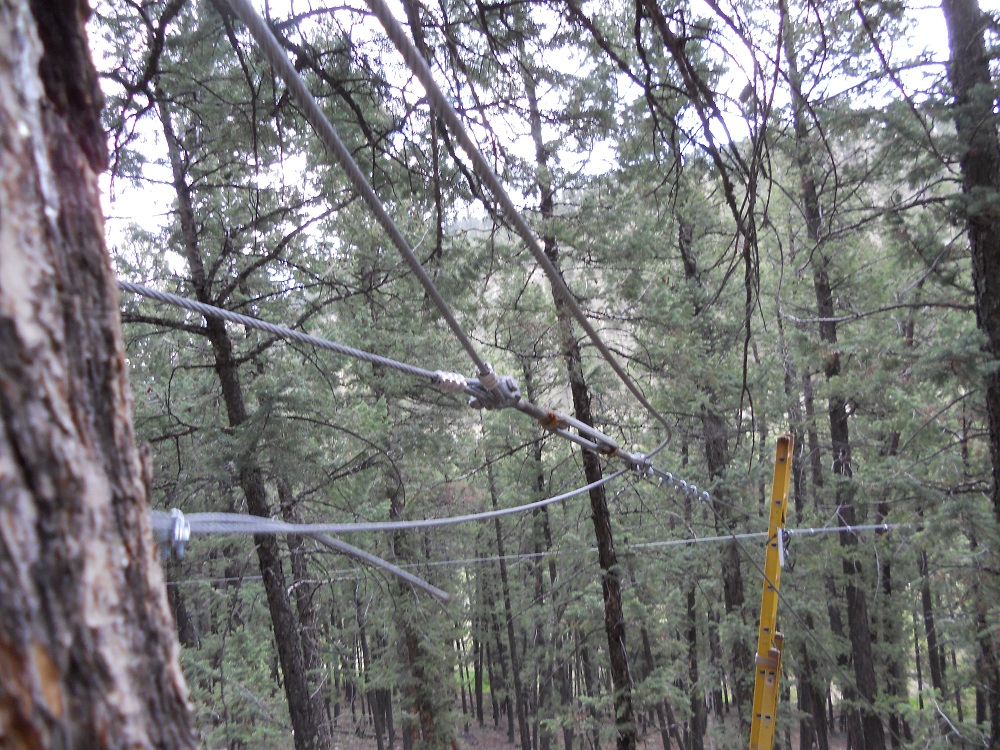
This here is one the other connection at the top of the zipline. Above the main connection you can see two other cables going away from the camera, those are the cables that support that tree. You can also see the ladder we were using to work on it with today.
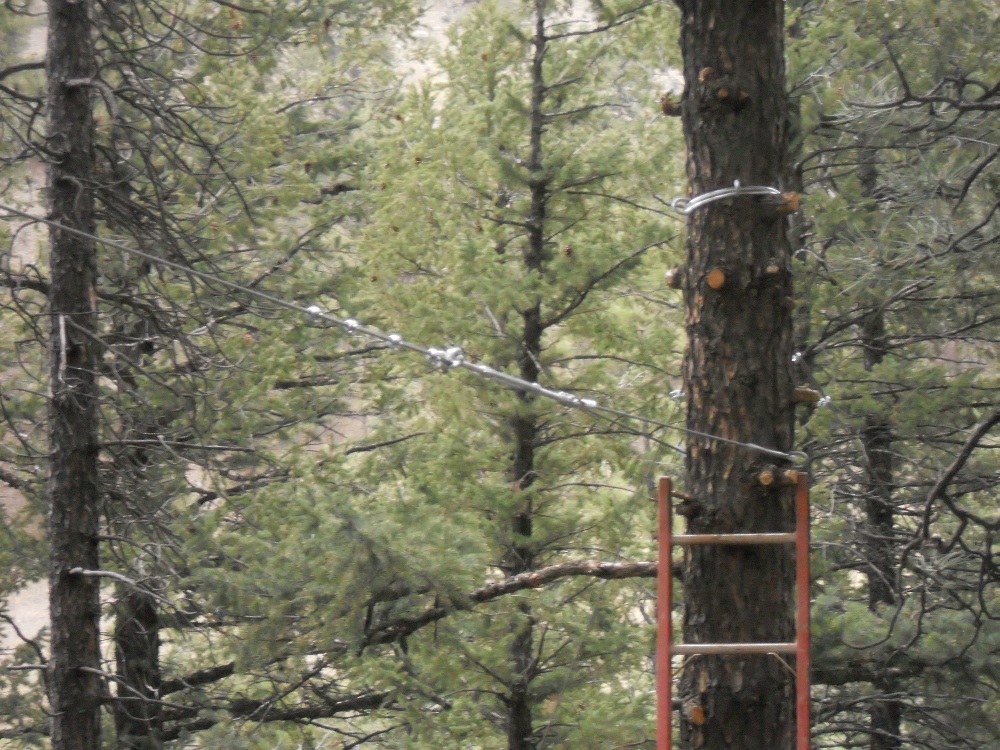
This is an image of the brake block. It is just a block of wood made of two small 2x4 segments with routed out middles to allow for sliding over the cable. The block is attached to an adjacent tree via the black bungee cord you see. This block is located near the end of the zipline so as you near the end of the zipline, the trolley hits the block which then slows you down in a very smooth fashion.
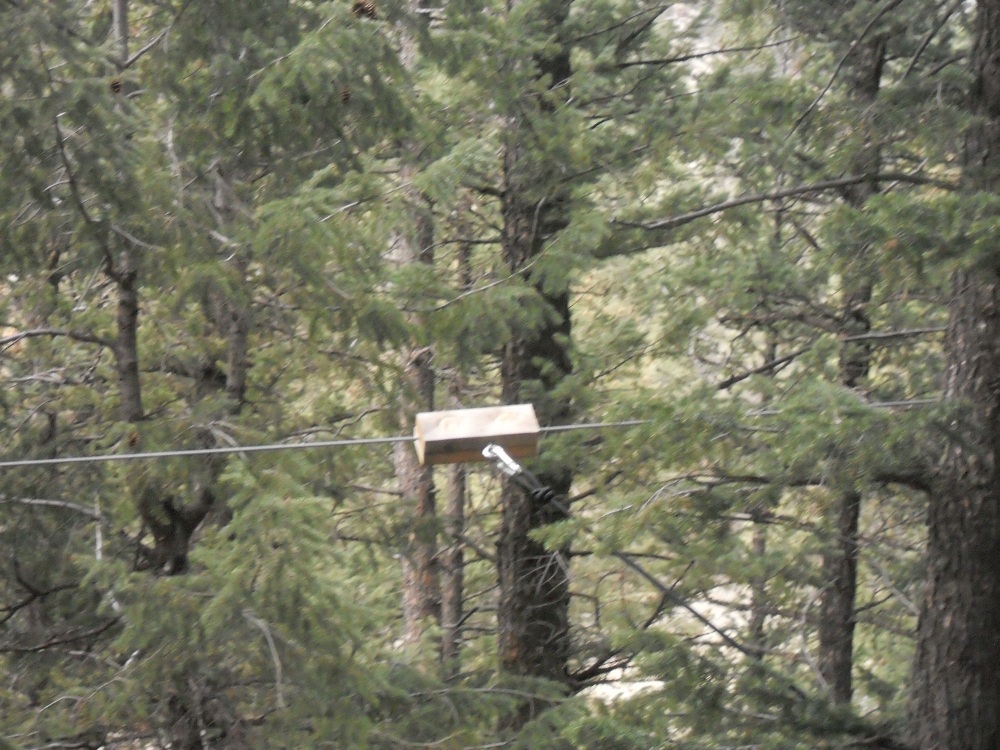
Here you see the two support cables that connect to the main bottom tree. The area between the cables is the road.

Here are the connections at the main bottom tree. The two cables that go to the left are the support cables that were shown in the last picture and the cable that goes to the right is the main cable. A bit further to the right is the brake block.

The steel 3/8 inch cable is under around 9,000 to 10,000 pounds of tension, though it can hold up to 15,000 pounds of tension.
The brake block is currently attached to a tree via a bungee cord as mentioned. At one point though it was attached to the adjacent tree via a stiff, non stretchy rope. That would stop the rider very abruptly and I once got injured pretty badly that way. It wasn't fun...

Today we installed a new brake block that will stop the rider should the first block shatter or otherwise catastrophically fail.
Today we also installed some more redundancy in the form of loose loops of cable where the main load bearing connections are so if one of the main connections fail, the loop will catch the cable, and hopefully everything will be repairable.
The rider sits in a harness that dangles from the cable via a paragliding grade lanyard, two carabeeners, and the trolley that rolls over the cable. One gets on at via the ladder at the top, goes to the bottom, is stopped by the brake block, and is towed back to the top to get off. We are currently working on a method of allowing the rider to get off at the bottom to eliminate the need to tow the rider back to the top.
Well thanks for reading this far if you have and please leave a post telling me what you think!

[/href]